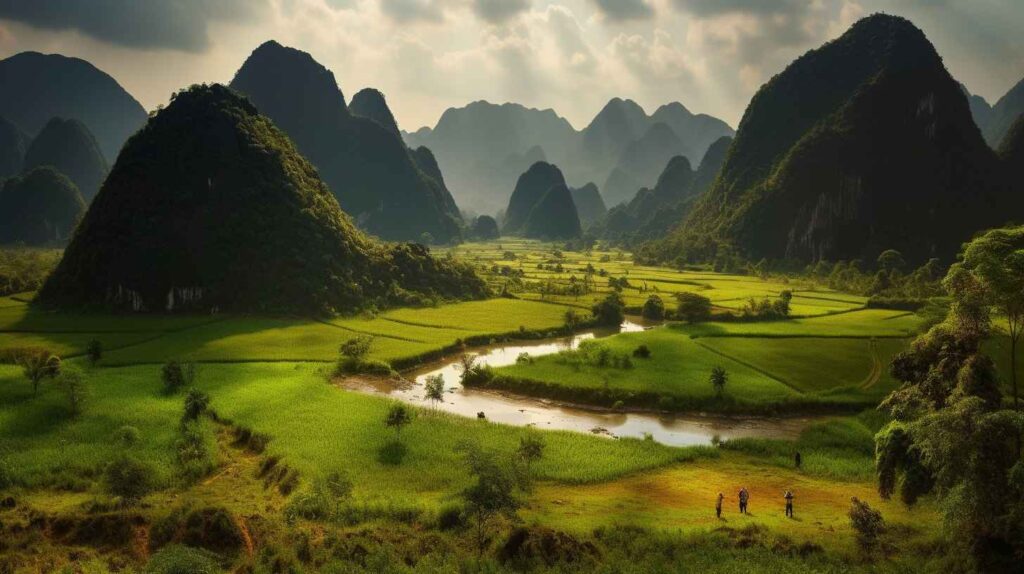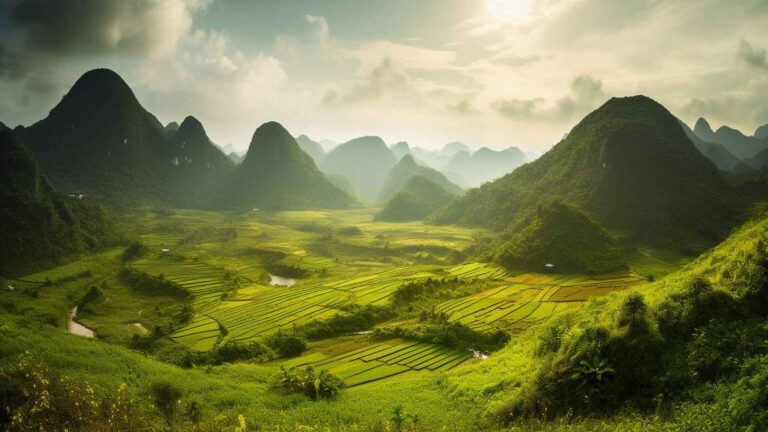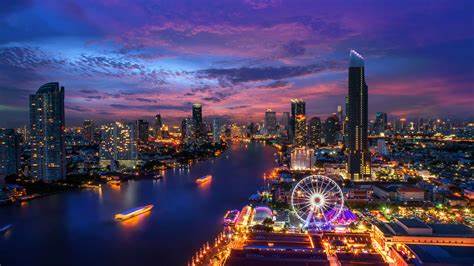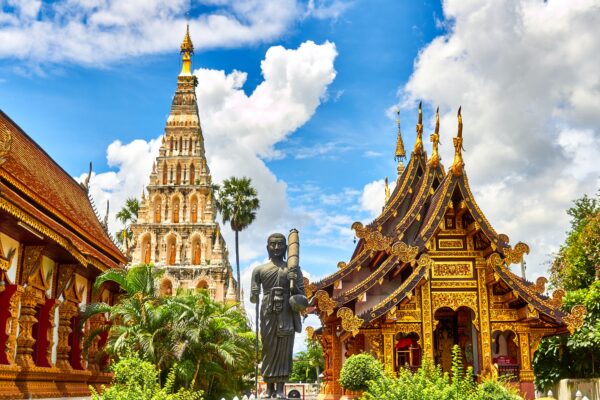Embarking on a journey to Vietnam offers an incredible opportunity to explore a country rich in history, culture, and natural beauty. From bustling cities to serene landscapes, Vietnam has something to offer every traveler. To make the most of your experience, it’s important to be prepared and informed. This article provides essential tips and insights for traveling to Vietnam, ensuring a smooth and rewarding adventure.
1. Visa Requirements:
Understanding the Visa Process: Before traveling to Vietnam, it’s crucial to understand the visa requirements for your specific nationality. Check the official government website or consult with the Vietnamese embassy or consulate in your home country. Determine whether you need a visa in advance or if you can obtain one upon arrival.
Visa-Free Entry and Visa on Arrival Options: Some nationalities are eligible for visa-free entry to Vietnam for a limited period. Others can apply for a visa on arrival, which requires pre-approval through an online service or a travel agency. Make sure to have all necessary documents and fees ready to ensure a hassle-free entry.
2. Weather and Climate:
Diverse Climate Zones: Vietnam’s geography results in a wide range of climates across the country. The north experiences four distinct seasons, with a cool winter and hot summer. Central Vietnam is prone to typhoons during the rainy season, typically from September to December. The south has a tropical climate with high humidity year-round.
Packing for the Weather: Pack lightweight and breathable clothing suitable for the tropical climate. Include a rain jacket or umbrella, especially if visiting during the rainy season. In the cooler months, bring a light jacket or sweater for the northern regions. Don’t forget essentials like sunscreen, a hat, and comfortable walking shoes.
3. Currency and Financial Considerations:
Vietnamese Dong: The Local Currency: The official currency of Vietnam is the Vietnamese Dong (VND). While some businesses may accept US dollars in popular tourist areas, it’s advisable to carry local currency for most transactions. Currency exchange services are available at airports, banks, and authorized exchange offices.
Exchange Rates and Money Matters: Stay updated on the current exchange rates and be mindful of potential fees and commissions charged by currency exchange services. ATMs are widely available in cities and towns, accepting major international cards. Credit cards are accepted in larger establishments, but it’s wise to carry cash for smaller vendors and local markets.
4. Language and Communication:
Vietnamese: The Official Language: The official language of Vietnam is Vietnamese. While English is spoken and understood in tourist areas and major cities, it’s helpful to learn a few basic Vietnamese phrases to enhance your travel experience. Locals appreciate the effort, and it can make interactions smoother and more enjoyable.
Basic Vietnamese Phrases for Travelers: Learn some common phrases like greetings, thank you, please, and basic numbers. Simple phrases like “xin chào” (hello), “cảm ơn” (thank you), and “xin lỗi” (excuse me) can go a long way in fostering friendly interactions.
5. Health and Safety:
Vaccinations and Health Precautions: Before traveling to Vietnam, consult with a healthcare professional or travel clinic to ensure you are up to date on routine vaccinations. Additional vaccinations for diseases like hepatitis A, typhoid, and tetanus may be recommended. It’s also essential to take precautions against mosquito-borne diseases like dengue fever and malaria by using insect repellent and wearing protective clothing.
Food and Water Safety Tips: To avoid stomach issues, stick to bottled water or boiled/filtered water for drinking and brushing your teeth. Be cautious when consuming street food and ensure it’s cooked and served in hygienic conditions. Wash your hands frequently or use hand sanitizer, especially before meals.

6. Transportation:
Domestic Flights and Airlines: Vietnam has a well-connected domestic flight network, making it easy to travel between major cities. Several airlines operate domestic routes, offering convenient options for long-distance travel.
Overnight Trains and Buses: Overnight trains and buses are popular modes of transportation for long journeys. They provide a unique experience and an opportunity to interact with locals. Book in advance, especially during peak travel seasons, to secure your preferred accommodations.
Getting Around in Cities: Taxis, Xe Om, and Ride-Sharing Services: In cities, taxis are readily available and can be flagged down or booked through a ride-hailing app. Motorbike taxis, known as xe om, are a common and affordable means of transport for short distances. Ride-sharing services like Grab are also popular and can be easily accessed through a mobile app.
7. Cultural Etiquette:
Customs and Traditions: Vietnamese people are known for their politeness and hospitality. Show respect for the local customs and traditions by observing and following their practices. Remove your shoes when entering temples or someone’s home, and dress modestly when visiting religious sites.
Dress Code for Temples and Religious Sites: When visiting temples or pagodas, it’s essential to dress appropriately. Wear clothing that covers your shoulders and knees as a sign of respect. Carry a sarong or scarf to cover up if needed.
Greetings and Politeness: Vietnamese greetings often involve a slight bow or nod of the head. When meeting someone, it’s customary to greet them with a smile and a friendly “xin chào.” Use polite words like “xin lỗi” (excuse me) and “cảm ơn” (thank you) in your interactions.
8. Exploring Vietnamese Cuisine:
Must-Try Dishes: Vietnamese cuisine is renowned for its fresh flavors and diverse dishes. Don’t miss out on iconic dishes like pho (noodle soup), banh mi (baguette sandwiches), and fresh spring rolls. Sample local specialties like bun cha (grilled pork with noodles) or cao lau (a Hoi An specialty).
Street Food Adventures: Venture into the vibrant street food scene and savor the delicious offerings. Explore bustling food markets like Ben Thanh Market in Ho Chi Minh City or Dong Xuan Market in Hanoi. Look for stalls with a high turnover of customers, as it’s an indication of fresh and tasty food.
Hygiene and Food Safety: While street food can be delightful, it’s crucial to ensure that the food is cooked and served in hygienic conditions. Opt for vendors with clean food preparation areas and fresh ingredients. Follow the locals’ lead and dine at popular establishments.
9. Top Sightseeing Destinations:
Vibrant Cities: Hanoi and Ho Chi Minh City: Hanoi, the capital city, offers a blend of old-world charm and modern attractions. Explore the historical sites of the Old Quarter and the tranquil beauty of Hoan Kiem Lake. Ho Chi Minh City, formerly known as Saigon, boasts bustling markets, colonial architecture, and a vibrant street food scene.
Natural Wonders: Ha Long Bay and Mekong Delta: Cruise through the breathtaking limestone formations of Ha Long Bay, a UNESCO World Heritage Site. Immerse yourself in the beauty of the Mekong Delta, with its lush green landscapes, floating markets, and river life.
Historical Sites: Cu Chi Tunnels and Hoi An Ancient Town: Visit the Cu Chi Tunnels near Ho Chi Minh City and learn about Vietnam’s wartime history. Explore the charming Hoi An Ancient Town, known for its well-preserved architecture, lantern-lined streets, and traditional crafts.
10. Respect for History and Culture:
Sensitivity towards War Memorials and Museums: When visiting war memorials and museums, approach them with sensitivity and respect. These sites hold significant historical and emotional value for the Vietnamese people. Follow the guidelines, observe silence, and refrain from engaging in disrespectful behavior or discussions.
Cultural Sensitivity in Interactions: Respect local customs and traditions in your interactions with the Vietnamese people. Seek permission before taking photos, especially of individuals. Engage in conversations with an open mind and avoid sensitive topics such as politics or war.
Responsible Tourism Practices: As a responsible traveler, be mindful of your impact on the environment and local communities. Dispose of waste properly, support local businesses, and choose sustainable travel options whenever possible. Learn about the local culture and traditions, and strive to leave a positive impression.
Conclusion:
By familiarizing yourself with these essential tips for traveling to Vietnam, you’ll be well-prepared to immerse yourself in the beauty, culture, and history that the country has to offer. From navigating visa requirements to respecting local customs, your journey through Vietnam is sure to be unforgettable. Embrace the adventure, savor the cuisine, and create cherished memories as you explore this captivating destination.




